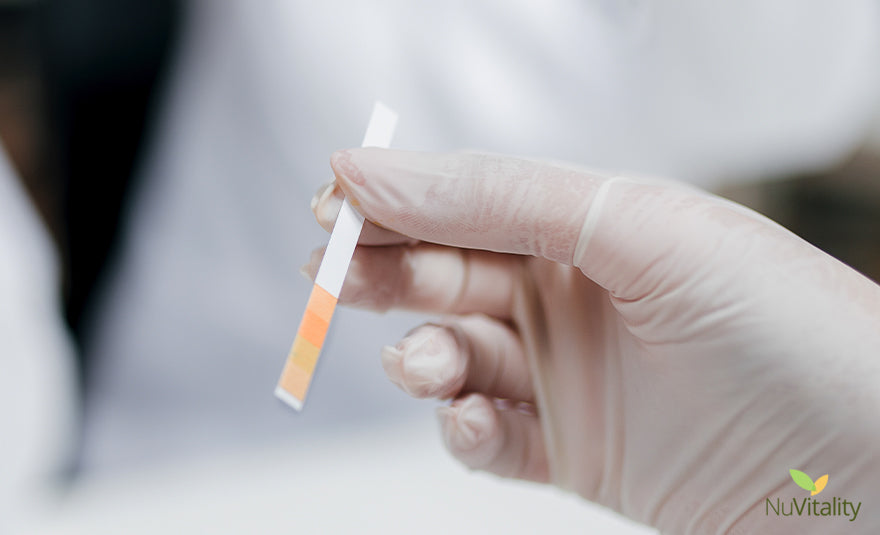
Dietary habits and supplements are an ever-growing component of our health in recent times. We use supplements and natural ingredients to improve our overall health and reduce the risk of diseases that we would otherwise be susceptible to. Some of these beloved health boosters are more common and popular than others to those who subscribe to them, with science backing their benefits to make them more appealing to us all.
What is the difference between a health supplement and a simple spice or vegetable? Sometimes, the line blurs between these additions to our diet about whether they accomplish the same result or are fundamentally different. Among the confusion lies turmeric and curcumin. Many believe they are the same product under different names, while others believe they are separate products with different benefits.
In this article, we hope to help enlighten you as to what the truth is.
Let's get started!
What is Turmeric?
What is turmeric? Turmeric, known binomially as Curcuma longa, is a flowering plant from the same family as Zingiberaceae, a type of ginger whose roots are extensively used for cooking. A perennial plant, turmeric is native to the Indian subcontinent as well as southeast Asia. Turmeric is gathered for its rhizomes, a cluster of roots, to be boiled, dried, and then crushed to be used as a flavor supplement around the world.

The Curcuma family has several species, ranging from region to region. There are 40 to 45 distinct species of Curcuma in India, whereas Thailand has between 30 to 40. There are also several wild variants of the plant throughout Asia, though only the Indian variants can be confirmed as C. longa, while the complex taxonomy of the others requires further botanical confirmation before being assigned as official members of the same family. This has gotten to the point that several plants that are like the verified Curcuma longa plant have been sold as turmeric across Asia interchangeably.
The origin of turmeric is not particularly exciting, but its use has seen extensive evolution since it was first harvested. Turmeric has been used for a great many reasons, becoming one of the key ingredients in Asian cuisine. Turmeric's main uses over time have been:
Cuisine: As previously stated, turmeric has been used in Asian cuisine for centuries. The plant has been used to impart an earthy, bitter taste into foods such as curry.

Dye: Turmeric has a golden yellow color from the curcumin in it and contains volatile oil with an orange coloration. As a result, the plant has been used to dye monk robes in India and is even used as a food additive to impart more coloration and protection from sunlight.

Turmeric Paper: Turmeric has been used to soak paper that can be used for pH tests.

Turmeric's uses have gone beyond its uses in these fields and have seen recent use as a health supplement. The spice has been used as a supplement for treating conditions such as:
- Hay Fever
- Depression
- High cholesterol
- Fat buildup in the liver
- Osteoarthritis
- Itching
Most of turmeric's use in treating these conditions stems from a key ingredient that is also shown in its binomial name: curcumin.

While curcumin is a major ingredient in turmeric, this does not necessarily mean they are the same. It is quite the opposite, as curcumin is merely a component of turmeric and is usable independently of the plant.
What is Curcumin?
Curcumin is the principal chemical in turmeric, providing the roots of Curcuma longa its distinct coloration. The chemical curcumin is a bright yellow diarylheptanoid produced by plants belonging to Curcuma longa's family.

Curcumin was first named by Pierre Joseph Pelletier, a French chemist, and a man named Vogel in 1815 after discovering the yellow-coloring matter in turmeric's rhizomes. Since its discovery, curcumin has seen use in Ayurvedic medicine but remains a relatively unproven medicinal herb due to the inconclusive results of its effects.
Curcumin's uses have ranged from a dietary supplement to food coloring. Curcumin serves as the primary source for the alleged medicinal benefits of turmeric. It is the most biologically active ingredient, and thus the most studied for its benefits. This still begs the question of whether curcumin is different from turmeric.
Are They Different?
Whether turmeric and curcumin are different is a less complicated question than it would first appear. While curcumin is a core ingredient in turmeric and the source of the latter's benefits in dietary, supplementary, and practical uses, it is a separate chemical that is not exclusive to turmeric and offers different benefits and effects from turmeric.

Curcumin only comprises about 2 to 5% of turmeric, meaning the consumption of turmeric will result in minimal curcumin intake. For this reason, curcumin is extracted from turmeric, refined, and sold independently as a supplement rather than relying on the minimal amount you would absorb from consuming the spice by itself. That is not to say that there is no overlap between the benefits turmeric and curcumin offer to the consumer.

Both the spice and the chemical offer have shown health benefits:
- Osteoarthritis: Studies from the National Center for Biotechnology Information (NCBI) have found that both turmeric and curcumin reduce inflammation in the body and joints, alleviating symptoms of osteoarthritis.
- Obesity: Like turmeric and curcumin's efficacy at dealing with osteoarthritis, studies from the NCBI have found that their use in reducing inflammation and even inhibiting the inflammatory pathways can affect obesity by restricting the inflammation associated with fat regulation to make it so the body regulates the fat more effectively.
- Heart Disease: A study conducted by the NCBI in 2017 found that both turmeric and curcumin can reduce low-density lipoproteins (LDL) and reduce the risk of heart disease in those with high cholesterol.
- Diabetes: Further studies by the NCBI have found that both substances have the potential to enhance your metabolism's ability to process blood sugar and, therefore, alleviate symptoms of diabetes.
- Liver: A study conducted on rats by the NCBI in 2016 discovered that turmeric extract and curcumin could reduce oxidative stress and shield the liver from chronic damage.
- Antifungal/Antibacterial: The NCBI has also found evidence that both turmeric and curcumin have been known to interfere with fungal cell membranes and reduce the growth of bacteria known to cause diseases, making both of them effective tools against fungal and bacterial infection.
While turmeric and curcumin share a great many benefits, that does not make them the same. They each have benefits and shortcomings that the other lacks. Turmeric, even without its curcumin base, has been found to help treat conditions such as arthritis and Parkinson's disease.
Turmeric uses several compounds that work harmoniously to maximize the benefits the spice has to offer, with curcumin only composing one of the eight components that make it such a beneficial addition to your diet. Using all eight components allows turmeric to effectively neutralize fungal growth and protect your body from a fungal infection that would otherwise spread. The Curdione in turmeric is the best component for its antifungal properties.
A study found that turmeric was better for inhibiting the growth of tumors than curcumin is by itself. However, curcumin's presence in turmeric makes it difficult to objectively determine if turmeric is inherently superior to curcumin alone when it comes to the health benefits the spice can offer. With that in mind, it is reasonable to say that turmeric is at least better for tending to a broad spectrum of issues.
When it comes to curcumin, it has long been considered the most active ingredient in turmeric, leading to research into extracting and refining the chemical to see how effective it is as a supplement on its own. Several studies on curcumin by itself have revealed it to be a powerful anti-inflammatory with antioxidant traits. These effects have led to the discovery that curcumin even works to support your body's ability to heal wounds due to the chemical antibacterial properties.
While it was found that both turmeric and curcumin help treat diabetes by aiding in the body's ability to process blood sugar, another study found that curcumin is better at it. Curcumin was found to be able to minimize tumor necrosis factor (TNF) and interleukin 6 (IL-6), both of which are significant components of type 2 diabetes.
In addition to the benefits to those who have diabetes, curcumin has been found to preserve bone mass in rats during an osteoporosis study. The rats were given turmeric extract enriched with curcuminoids, with the results showing promise. With all this in mind, it is important to note that curcumin on its own does not get absorbed well by the body, often passing through the body undigested. It has been found that the piperine in black pepper helps increase the bioavailability of the curcumin by 2,000%, which can be used to enhance the effectiveness of curcumin supplements.
Side Effects
The benefits of turmeric and curcumin might seem appealing, but no supplement or medication is free of risk. Each of them comes with side effects that might be just as likely to affect your health than positively negatively. Thankfully, most of the side effects of turmeric are due to rare allergies or consuming very large amounts of it.

Turmeric contains 2% oxalate, an organic compound found in several plants, which can contribute to an increased rate of kidney stones in those who are already predisposed to them.
One of the bigger risks of turmeric powder, the most common form the supplement takes, is that it is not always pure. To cut costs, powders are sometimes sold with less expensive ingredients that are not listed on the label, which runs the risk of causing health issues for those who consume them (especially in sensitive or allergic individuals). These fillers can sometimes include:
- Cassava starch
- Wheat flour
- Barley flour
- Rye flour
Consuming turmeric powder with these additives may distress your stomach if you have a gluten intolerance or celiac disease.

On top of this, some powders have food colorants to reclaim color lost when mixed with the flour. One of the most frequently used colorants is Metanil yellow which, in animal studies, has been shown to cause neurological damage and even cancer if overconsumed. Any time you choose to buy a supplement, make sure you trust the producer.
Curcumin, like turmeric, comes with its share of risks as well, though at a much lesser rate comparatively. A study conducted found that ten adults using 490 mg of curcumin for a week resulted in no adverse side effects. However, a small number of side effects were recorded in those taking higher doses of the supplement, including:
- Digestive Issues: A study found that daily doses of curcumin of 1,000 mg or higher resulted in bloating, diarrhea, and flatulence due to the excess chemical in their system.
- Headache: Doses of 450 mg or higher were recorded as causing headaches and, in some cases, even nausea.
- Rash: Extremely high doses of 8,000 mg of curcumin had the rare side effect of causing skin rashes.
The risks associated with curcumin and turmeric are not exact as the real issue comes from excess or products with illicit and hidden additives. However, as with all supplements, the risk will never stop being a factor, and it becomes a matter of the consumer to exercise responsibility when purchasing and consuming them.
The Answer
Curcumin is an extremely important component of turmeric, serving as the primary source of the health benefits for which the spice is so readily lauded. One might think that, due to them being a part of the same plant, curcumin and turmeric are the same things. However, the truth is that curcumin is a chemical, while turmeric is a spice that has the chemical as a naturally occurring ingredient.

They are not the same thing at all and offer different benefits to your health; turmeric serves as a more generalized supplement while curcumin is more specialized. With that in mind, it remains unconfirmed even in 2021 whether one is better than the other to take. Both have their benefits, though relying solely on curcumin might require you to add more black pepper to your diet to ensure the chemicals' benefits are not lost.
Ultimately, both turmeric and curcumin serve similar purposes in reducing inflammation and helping your metabolism cope with infection and disease.*
Despite both products being different from each other, albeit turmeric requires curcumin to be complete, their similar purposes render them fairly interchangeable when seeking a supplement for your health.






